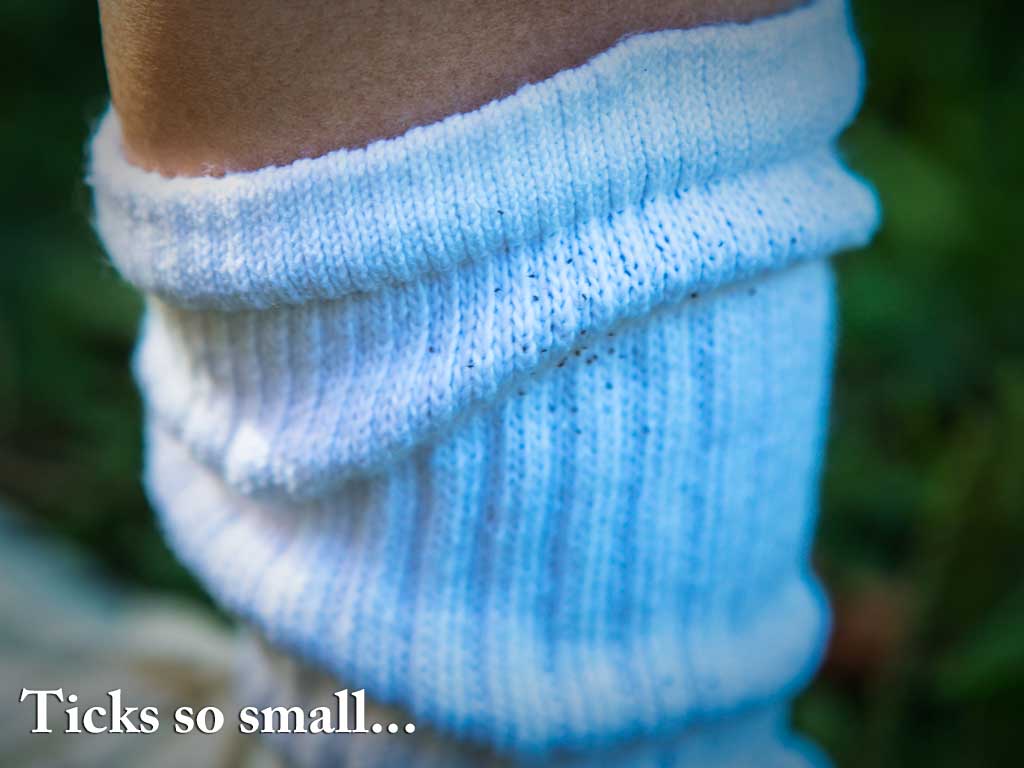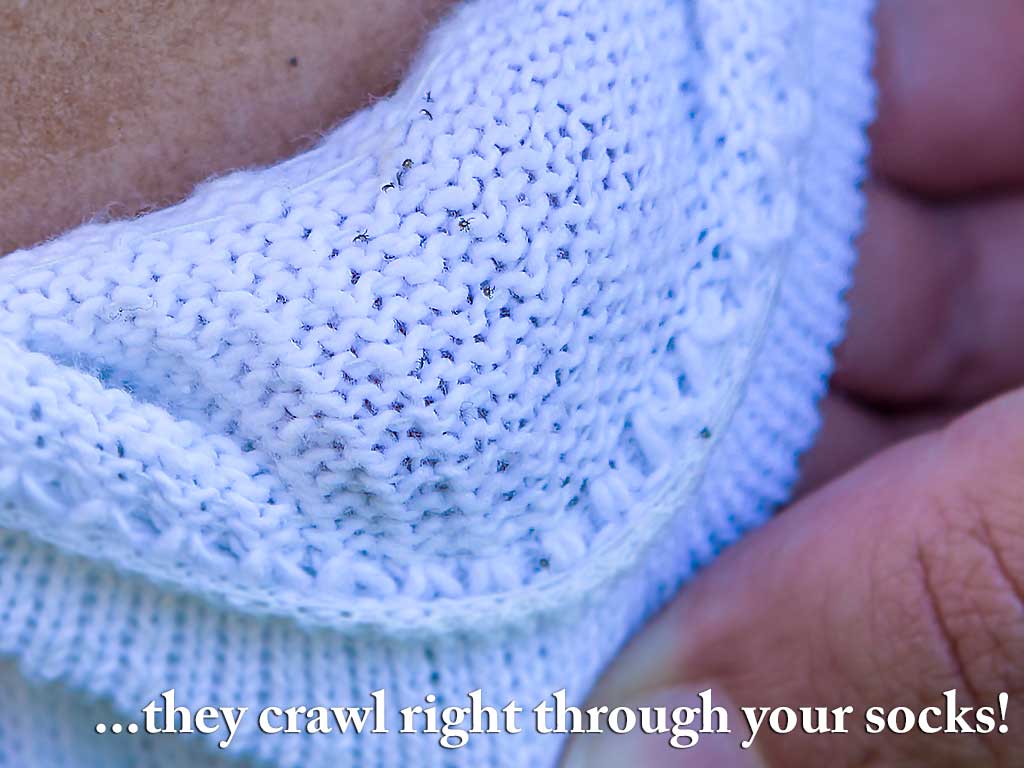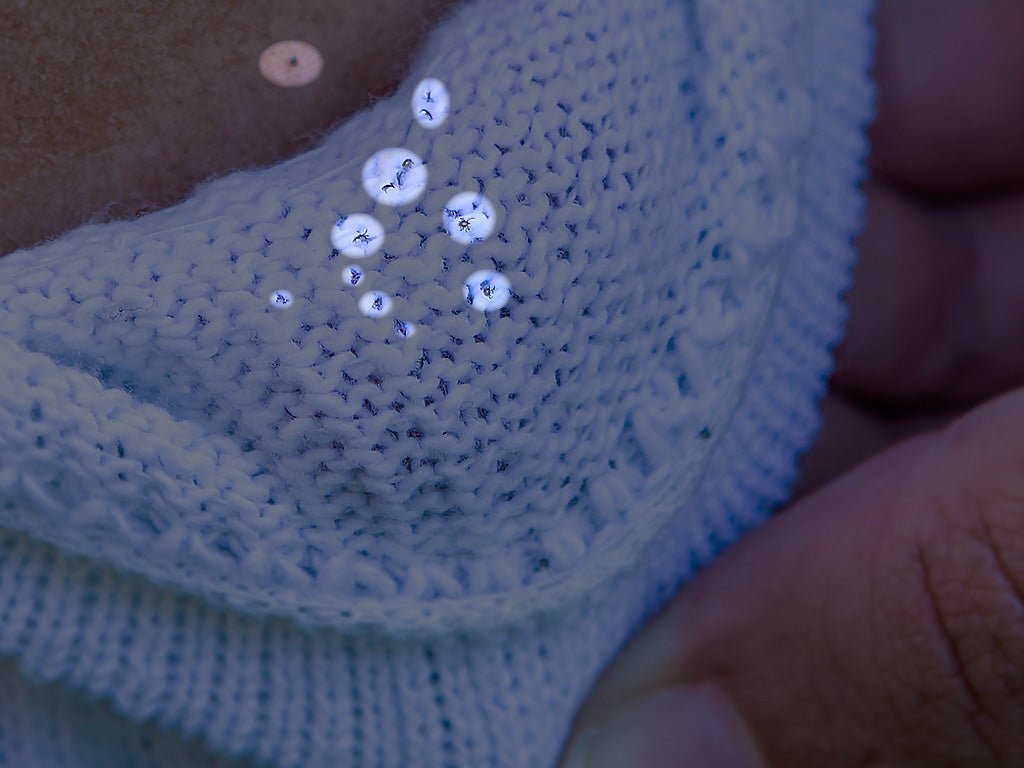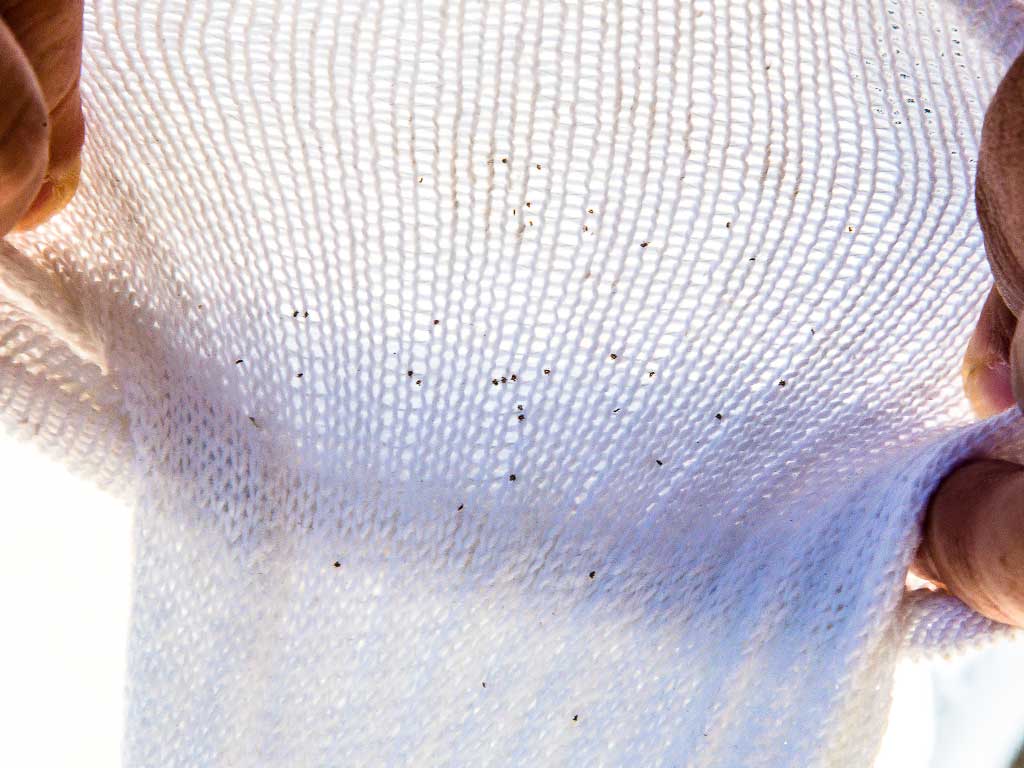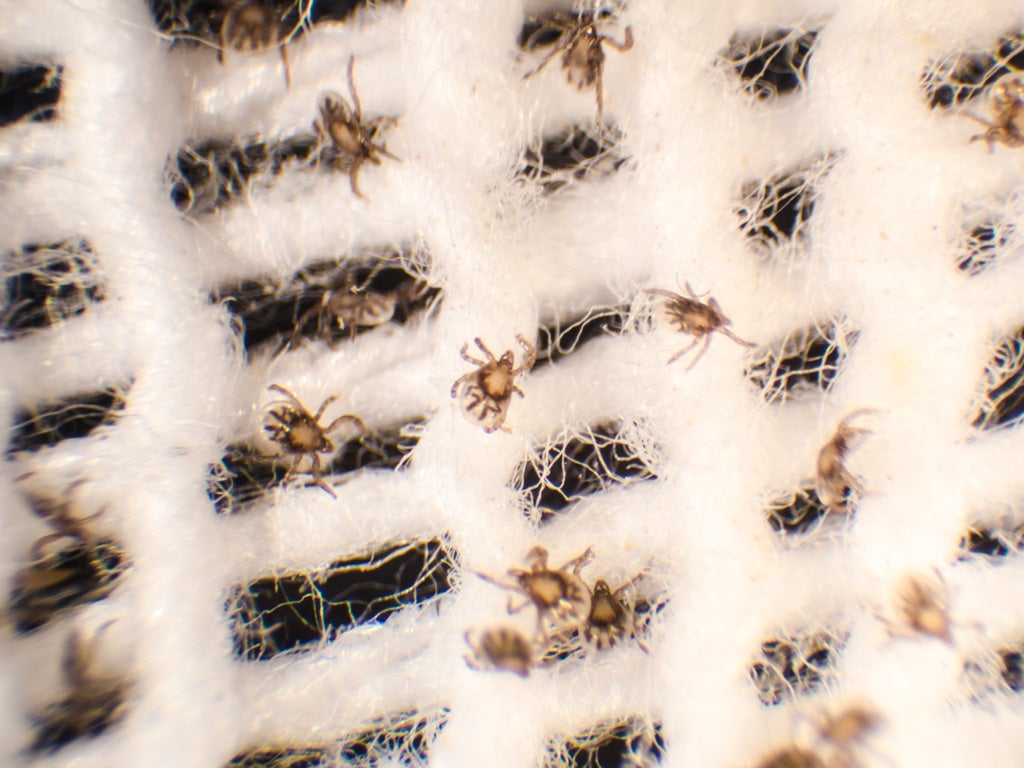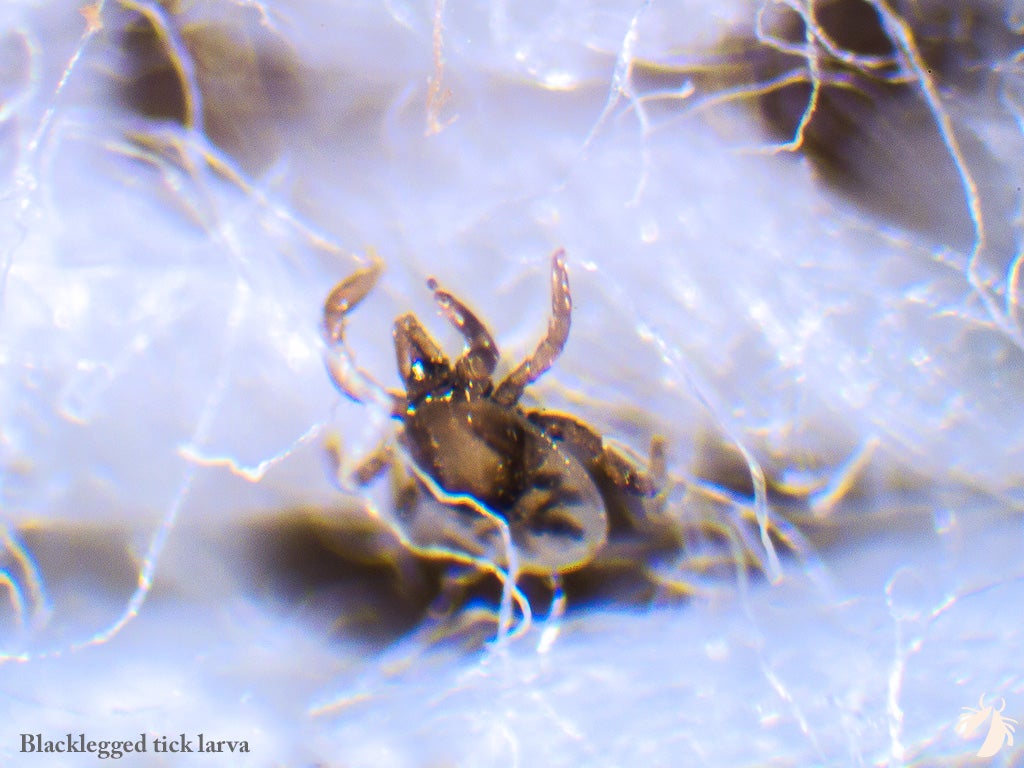All ticks come in small, medium, and large sizes; officially these life stages are termed larva, nymph and adult (male and female), respectively. But just how small is small?
We’ve heard words like — tiny, miniscule, microscopic, tick dust, seed tick, grain of sand, can’t see ‘ums – to describe larval ticks. We’ve also heard expletive comments (a lot) related to people’s larval tick exposures. But these ticks are so small, they even can crawl right through your socks!! (but probably not nylon stockings). One of the biggest problems with larval ticks is that you rarely encounter just one. Stories that include “tick nest” usually end up being about larval ticks. Some people end up finding hundreds biting them from a single encounter. We’ve found a few hundred attached and feeding to the toes of a dog.
While larvae are mostly noninfective right out of the egg, they have been found to be carrying disease agents like the newly recognized human pathogen Borrelia miyamotoi, the agent of Rocky Mountain Spotted Fever (Rickettsia rickettsiae), and the cattle parasite Babesia bovis. Some larval tick bites also have been linked to development of red meat allergies. Pathogen transmission leading to infection following larval tick bites is usually a rare event… but it can happen.
One way to protect yourself from ticks that can crawl through your socks is to always wear tick repellent socks when outside in tick habitat. Purchasing socks pre-treated with permethrin or treating your own with a permethrin spray are terrific ways to keep these tiny blood suckers from biting you.
Learn more about how to protect yourself from larval ticks.

